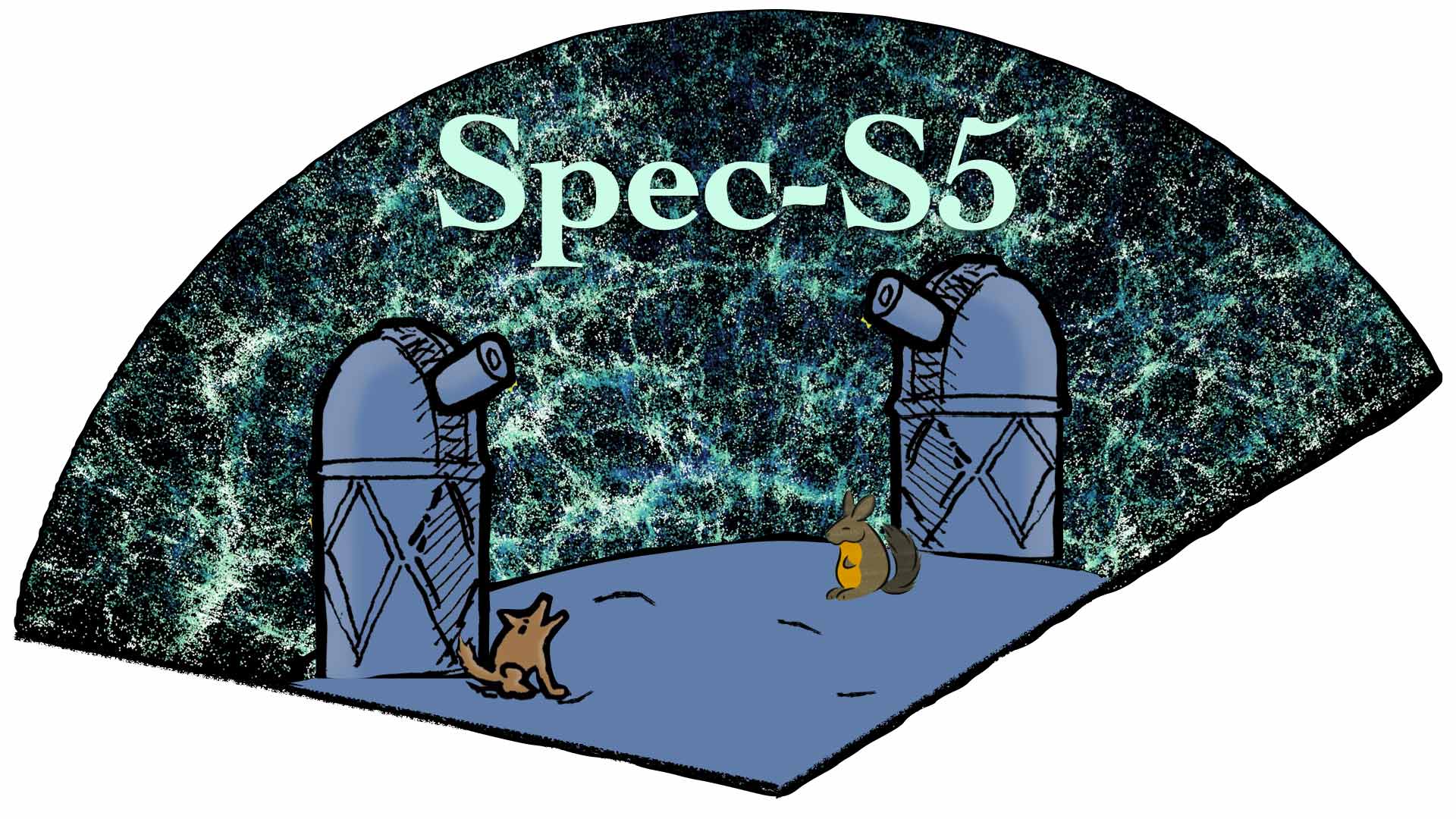Berkeley Lab’s Physics Division recently hosted a workshop on Fundamental Physics from Future Spectroscopic Surveys. On May 6-8, an international community of over 100 high-energy theorists and cosmologists convened to explore the observational signatures of “physics beyond the Standard Model” in large-scale structures that will be measured with ongoing and future spectroscopic surveys. The workshop was live streamed for a hybrid participation, and the video recordings of each session are now available online.
Based on key recommendations in the 2023 P5 Report, the next generation of spectroscopic surveys will be key tools to explore inflationary physics, late-time cosmic acceleration, light relics, neutrino masses, and dark matter. Building on the successes of the Dark Energy Spectroscopic Instrument (DESI), Berkeley Lab researchers have envisioned a “spectroscopic roadmap” to see new galaxies even farther away.
“By the end of DESI’s planned 5-year survey, we will have mapped about 1% of the observable Universe at high fidelity,” explains Simone Ferraro, a senior scientist in Berkeley Lab’s Physics Division, who was part of the Scientific Organizing Committee. “While DESI’s primary goal is to study Dark Energy at late times, where it’s the dominant energy component in the Universe, next-generation spectroscopic surveys will allow researchers to peer even farther back into the past and to study the evolution of the Universe and its constituents throughout cosmic history, from the very first moments to the present day,” continues Ferraro. “Of particular interest is to study the period immediately following the Big Bang, also known as ‘inflation,’ where we test physics at energy scales much larger than those achievable with earth-based colliders.”
 Based on their earlier research to advance the science case for mapping the high-redshift Universe in 3D, Ferraro and colleagues see a unique opportunity to significantly extend DESI’s groundbreaking efforts. After the completion of DESI (and possible extensions), the next step in the proposed roadmap is a DESI-2 project, which would reuse the same telescope and instrument as DESI, but observe different types of galaxies and address new science objectives. The plan culminates in a new project – Spec-S5 – which will be approximately 15 times more powerful than DESI, enabling researchers to map an even larger portion of the observable Universe using technology currently being developed at Berkeley Lab and elsewhere. Planned for completion in the late 2030s, Spec-S5 will consist of two twin platforms: one a substantial upgrade of the DESI’s current telescope and instrument, and the other a similar upgrade of the Blanco telescope in Chile. Each platform will be equipped with robotically-actuated, fiber-fed spectrographs capable of simultaneously measuring about 26,000 spectra (split between the two telescopes) at optical and near-infrared frequencies.
Based on their earlier research to advance the science case for mapping the high-redshift Universe in 3D, Ferraro and colleagues see a unique opportunity to significantly extend DESI’s groundbreaking efforts. After the completion of DESI (and possible extensions), the next step in the proposed roadmap is a DESI-2 project, which would reuse the same telescope and instrument as DESI, but observe different types of galaxies and address new science objectives. The plan culminates in a new project – Spec-S5 – which will be approximately 15 times more powerful than DESI, enabling researchers to map an even larger portion of the observable Universe using technology currently being developed at Berkeley Lab and elsewhere. Planned for completion in the late 2030s, Spec-S5 will consist of two twin platforms: one a substantial upgrade of the DESI’s current telescope and instrument, and the other a similar upgrade of the Blanco telescope in Chile. Each platform will be equipped with robotically-actuated, fiber-fed spectrographs capable of simultaneously measuring about 26,000 spectra (split between the two telescopes) at optical and near-infrared frequencies.
“We have the opportunity to quintuple the fraction of the Universe that we observe to answer some of the deepest questions about the origin and evolution of our Universe. This is the ‘low-hanging fruit’ of cosmology,” said Ferraro. Other Berkeley Lab researchers including David Schlegel, Martin White, Satya Gontcho A Gontcho (Chair of the Local Organizing Committee), Edmond Chaussidon, Roger de Belsunce, and Noah Weaverdyck, contributed to organizing the event.
Future meetings are being planned to continue developing a wider research community and to catalyze several new publications that will further strengthen the case for DESI-2 and Spec-S5.
Learn more:
Event Website and Agenda
Session Videos / View the Full Playlist on YouTube
- Monday, May 6, 2024
Session 1: Observations and Facilities
Session 2: Theoretical Modeling and Higher Order Statistics
Session 3: Inflationary Physics – non-Gaussianity
Session 4: Particle Physics and LSS
